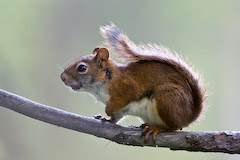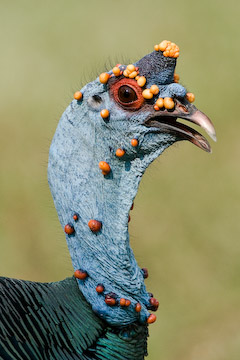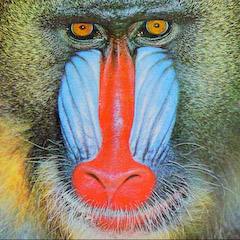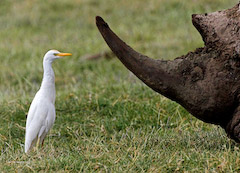Links: this page
Rodents
Back to Research Index
Miller Lab home page
"Evolution is cleverer than you are." The best we can do, so far, within a species of mammals, is to postpone aging and extend lifespan by about 40% - 50%, using diets, drugs, or single gene mutations. But evolution, with more time and resources, has been able to construct species of mammals with maximum lifespans as long as ours (122 years) or whales (~200 years), using the same body plans and cellular toolkit that postpone aging for only 3 years in mice, 10 years in dogs, 20 years in horses, and about 30 years in chimpanzees. The most fundamental question in biogerontology is one of the simplest to frame: How does Nature produce long-lived species from short-lived progenitors? Evolution of longevity, i.e. evolution of mechanisms that postpone or buffer the effects of time on cell and tissue function, occurs repeatedly within the mammalian radiation, creating long-lived porcupines, humans, whales, bats, elephants, and mole-rats. Does Nature always use the same tricks, or a subset of them, to slow the aging process when doing so is adaptive? We hope that learning the answer to this question may help point the way to strategies that can further slow aging in people.
Our studies of skin-derived fibroblasts from long-lived mutant mice (see this link) demonstrated that cells from Snell and Ames dwarf mice, and GHR-KO mice, were resistant in culture to multiple forms of oxidative and non-oxidative stress, and differed from control cell lines in many biochemical properties, even though the cells had been grown in vitro for weeks before testing. This stable set of stress-resistance properties must reflect some epigenetic programming, "set" in the adult mouse, which continues to function in culture. We therefore tested cells from multiple species of rodents and birds to see if similar forms of stress resistance could be found in cells from long-lived species.
1. Long-lived and short-lived rodents. Fibroblast cells lines were established by Jim Harper from mice, rats, red squirrels, fox squirrels, white-footed mice, deermice, porcupines, little brown bats (not really a rodent, but close enough to fool a cell biologist), and a beaver. With Adam Salmon and Scott Leiser, Jim Harper found that the cells from the longer-lived species were resistant to death caused by cadmium and peroxide, showed a similar trend for the DNA damaging agent MMS and heat, and were resistant to agents that blocked the plasma membrane redox pump. There was, however, no evidence to associate species longevity with cell resistance to UV light or the oxidant toxin paraquat. These results showed that cells from long-lived animal species are resistant to multiple forms of stress in culture, including forms of stress associated with longevity mutants in mice. The results were published in Aging Cell in 2007 [PubMed]. Work is now in progress to extend these findings to other rodent species, and to investigate specific hypotheses about the mechanism for stress resistance in these cell lines.
2. Naked mole rat cells in culture. Naked mole rats (abbreviated NMR to evade the prurient speculations of automated web filters) are very long-lived rodents, set off from run-of-the-mill rodents by a eusocial mating system, poikilothermy, astonishing resistance to spontaneous cancer, and an unattractive physiognomy. In a collaboration with NMR maven Dr. Rochelle Buffenstein, we evaluated skin-derived fibroblasts from NMR, and found them to be resistant to the lethal influence of cadmium, MMS, paraquat, and heat, as well as the metabolic effects of inhibitors of plasma membrane redox pumps, when compared to mouse cells tested in parallel [PubMed]. NMR fibroblasts, surprisingly, were more sensitive than mouse cells to hydrogen peroxide and UV light.
3. Long and short-lived birds. Most bird species are longer lived than species of mammals of comparable body size, even though the birds tend to have higher body temperature and metabolic rate. Consistent with other evidence linking cellular stress resistance to species longevity, we demonstrated [PubMed] that bird fibroblasts were more resistant than mouse and rat fibroblasts to multiple lethal stresses including cadmium, paraquat, peroxide, and MMS. In addition, we found that cells from longer lived bird species were more resistant to most of these stresses than cells from shorter-lived bird species, consistent with our previous work using a panel of rodent cell lines. This work was done largely by Jim Harper, using skin biopsies provided by Dr. Joseph Williams at Ohio State.
4. Resources for collaborative studies. With support from the Comparative Biogerontology Core of our Nathan Shock Center, we have accumulated an archive of cell lines from multiple species, including ~ 20 species of rodents, ~ 60 species of birds, and ~20 primate species. We are using these for studies of the mechanism of cellular stress resistance, as well as new work on metabolomics and patterns of gene expression. We welcome inquiries from other scientists who wish to obtain cell lines, or cell lysates, for colloborative studies related to the evolution and comparative biology of aging.
- Analysis of the mechanism of resistance to cadmium toxicity (with Lubos Dostal and Carol Fierke)
- RNA-seq analysis of transcription patterns (with Vadim Gladyshev, Pui Kwok, Nik Schork)
- Development of new demographic indices for species longevity (Jake Moorad, Nate Flesness, Dan Promislow)
- Metabolic analysis (with Chris Beecher, Andrzej Galecki)
- Studies of ERK phosphorylation, autophagy, and chaperone protein levels across species
Collaborators: Steve Austad, Chris Beecher, Lubos Dostal, Nate Flesness, Carol Fierke, Andrzej Galecki, Vadim Gladyshev, Jim Harper, Pui Kwok, Jake Moorad, Dan Promislow, Nik Schork
Support: National Institute on Aging, Longevity Consortium, Nathan Shock Center on the Biology of Aging
[Last update: December, 2011]




